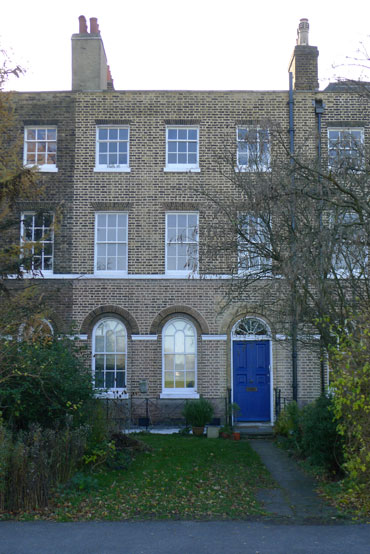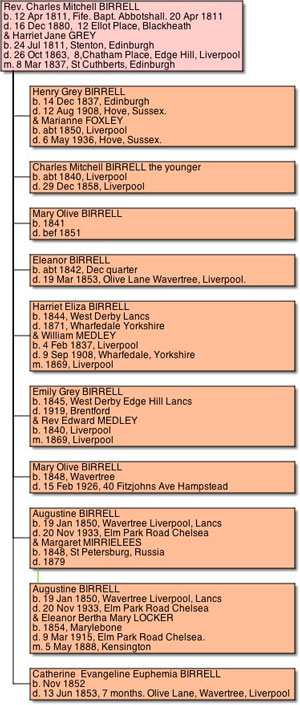
Charles Birrell photographed in the studio of J. Lee, at 57 Church Street, Liverpool.
Photo from the Josephine Butler archive, LSE Library collections. Ref 3AMS/G/04/026

The Rev. Charles Mitchell Birrell
Born 12 April 1811 in Kirkcaldy in Fife, baptized at the Church in Abbotshall.
Baptist Minister at the Pembroke Chapel in Liverpool.
Married Harriet Jane Grey in Edinburgh on 8th March 1837.
Died 16 December 1880 at 12 Elliot Place, Blackheath.
Buried West Norwood Cemetery, grave number 382 on square 40

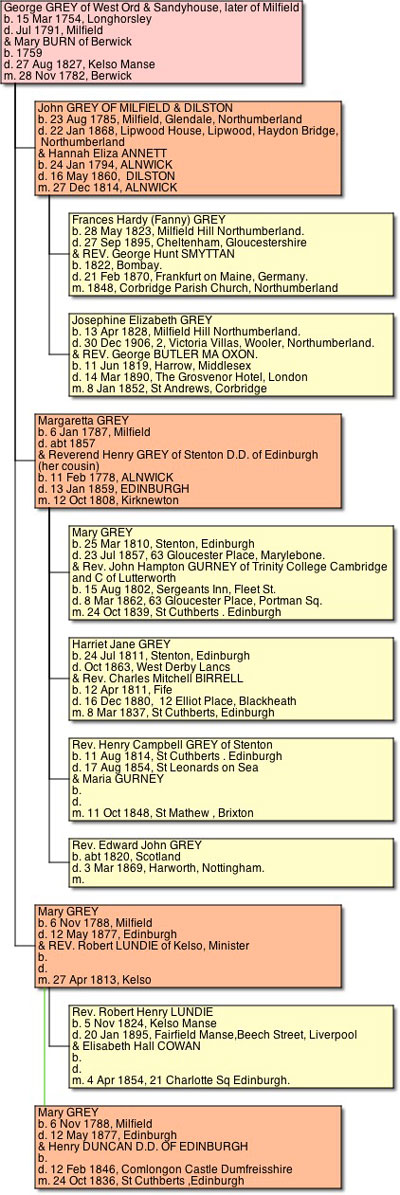
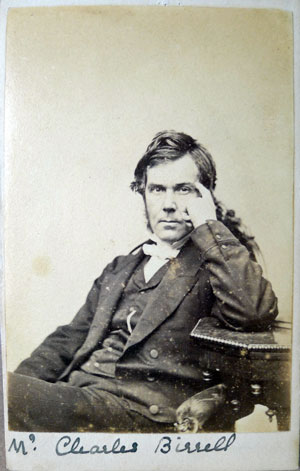
The Grey Family Harriet was the daughter of the Rev. Henry Grey of Stenton Edinburgh, whose wife was his cousin the intelligent and courageous Margaretta Grey. Henry campaigned against slavery and for political reform. Margaretta was the Aunt of the well-known social campaigner Josephine Butler.
Josephine described her Aunt in the book she wrote about her father John Grey. “Her sentiments at that time were revolutionary! Her desire to hear debates in Parliament was so unbounded, that, there being at that time no ladies' gallery, she had the hardihood to make her way into the House dressed as a boy.”
Margaretta’s sister Mary Grey had married the Rev. Lundie and was well known for her memoirs and a book on education. The Lundie's son, Robert Henry was a protestant minister in Liverpool and gave the memorial services for both Charles Birrell, his wife and their son Charles at the Pembroke Chapel after their deaths. Charles Birrell went on to support Josephine Butler in her campaigns
Childhood and Education Charles Birrell and his younger brother Ebenezer were born in Kirkcaldy in Fife and baptized at the Church in Abbotshall. His father Ebenezer was a merhant. Educated at Edinburgh University, Charles had begun his life with a business career but decided to join the church. He was educated at the Baptist’s College in Stepney, which later became Regents Park College, Oxford in 1856. Students at the college studied for 4 years and were expected to read Virgil in Latin and the New Testament in Greek.
“The subjects taught included Greek, Hebrew and Latin, mathematics, English composition, rhetoric, logic, history, Jewish antiquities, mental and moral philosophy, evidence theology, ministerial duties, Christian doctrine, and ecclesiastical history. The students were tested in all these areas by an annual examination assessed by external examiners.”
He left the college in 1835, when he was 24 and became a Baptist Minister in 1836 at the Byrom Street chapel in Liverpool. The Baptist Magazine, described it as in “ a very low and thickly populated part of the town”
Charles married Harriet Jane Grey in Edinburgh on 8th March 1837. She was the daughter of Margaretta Grey and Henry Grey.
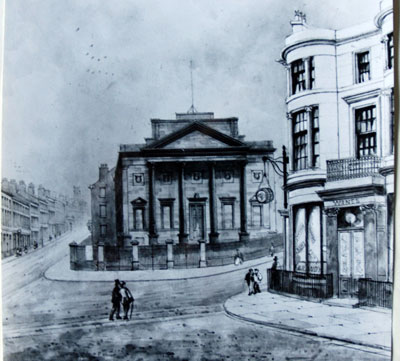
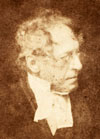
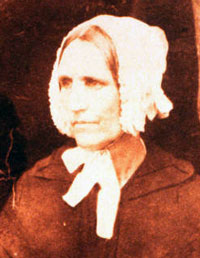
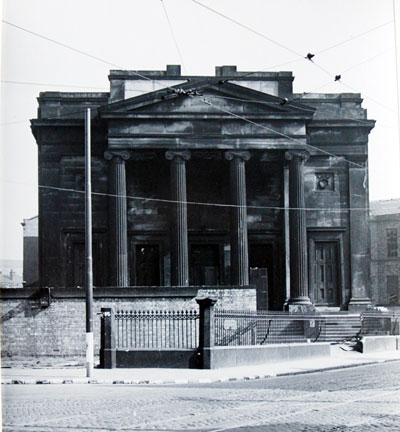
The Pembroke Chapel
In 1838 Charles led a group who succeeded from the Byrom Street Chapel after a new strict Baptist minister practiced closed communion. The Pembroke Chapel was built and opened in 1839. Described as “ built of white freestone, with a portico of four columns. The interior is substantial, elegant, and chaste and enlivened with an excellent organ.” It adopted open membership in 1840 so that anyone, including the unbaptised ,could join.
The Birrell family lived in Pembrooke Place in 1841 with their 3 children Henry, 3, born in Edinburgh, Charles, 1, and Mary, 4 months, both born in Liverpool.
“The ministrations of the rev. gentlemen were marked by great success, and he entered with great spirit into the work of establishing sister churches in Birkenhead, Bootle and Everton, in addition to the immediate duties of his pastorate, which were invariably attended to most zealously. He continued as the minister of Pembroke Chapel until nearly the end of the year 1872”
In 1864 Charles laid the foundation stone of Richmond Baptist church in Toxteth. By October 1866 the Baptist magazine noted: “ The Pembroke Chapel, Rev. C. M. Birrell, minister, who is also too well known and esteemed to need any remark here. Members 393, Sunday scholars 514 teachers 49.”
The watercolour on the left is dated 1870 and the photograph 1942. It stood on the corner of Pembroke Place, West Derby Street and Crown Street. The map below is from 1890. The building was bombed in WW2 and no longer exists.
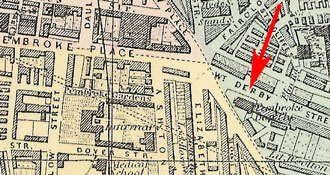
Sermons
Charles contributed throughout his life to leading Baptist Educational and Missionary Institutions. He was a member of the bible translation society and his sermons were reproduced. On the Sunday after a severe storm he spoke on board the floating chapel of the Port.” The Winds and Waves Subject to Christ” was printed on page 297 of the weekly Christian Teacher in 1838. To the modern reader it is not comforting. He paints a dreadful picture of the tragedy and uses the disaster as a warning to his listeners to repent their sins.
“ How dreadful was that event. Last Sabbath evening many congregations were assembled together in peace, fearing no danger, and anticipating no calamity. Yet at that very time the great Mediator, whose claims had been represented in all his sanctuaries throughout our native land, was preparing to visit us with awful exhibitions of his power… Then suddenly came forth the power of his anger. In the course of about three fearful hours, events of most terrible nature, and of still more direful consequences, transpired. Ships going forth, bearing some hundreds of immortal souls, many of them bound to one another by the tenderest ties of nature, were driven to atoms in the boiling and heaving ocean... The husband saw the waters close over the pallid face of his wife; while the trembling wife, in another instance, saw her husband launched into the abyss; and again, a weeping infant, we are told, was dragged from the lifeless grasp of its parents, who had both perished by each other's side. … Sailors, too, each immortal, each destined to the judgment-seat, were sinking on every hand; and as they sunk, it may be, in some instances, profane language and awful curses faded away upon their expiring lips! O who can contemplate such a scene! Who can meditate on its dread hereafter! A book of memorial sermons from the Myrtle Street & Pembroke Chapels by Birrell was published in 1864.
Family Life By 1851 Charles lived at Olive Lane in Wavertree, with Harriet, and their children Henry, 13, Charles 11, Harriet, 6, Mary Olive 3 and Augustine 1.
His oldest son Charles attended the Edinburgh Academy between 1853 and 1856, but died very young in 1858 at the age of 18. He was living at the time of his death at 18 Holland Terrace, Edge Hill. Although in 1856 Charles and the Rev. F A. West had opened the dissenters portion of Toxteth Park Cemetery, Charles the younger was buried in the Liverpool Necropolis.
Charles Snr. is not with the family on the night of the 1861 census but his wife Harriet is with their children at 18 Duke Street, North Liverpool, with Henry 23, Emily, 15, Mary Olive 13, and Augustine 11.
Harriet died in 1863 at 8, Chatham Place, and was also buried in the Necropolis. Burial records show that other family members were buried in the same plot. The Necropolis had been opened in 1825, on a site covering five acres. It was used largely by nonconformists. It was filled in the following 70 years with 80,000 burials. It was closed for interments on 31 August 1898, and transferred to Liverpool Corporation. In 1913 the lodges, gates & walls were demolished, monuments and large gravestones removed and the area landscaped with ornamental gardens. On the 22 April 1914 the Corporation renamed and re-opened it as Grant Gardens . It isn't known if a record of the monuments was kept.
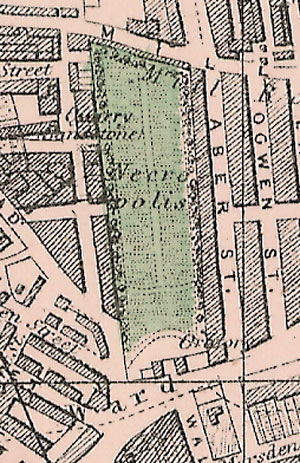
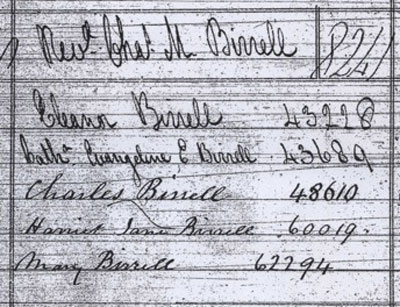
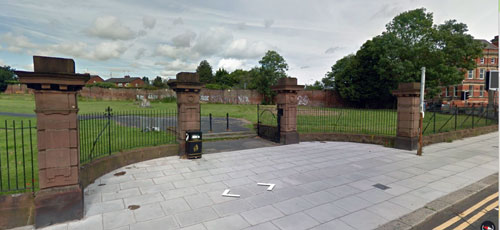
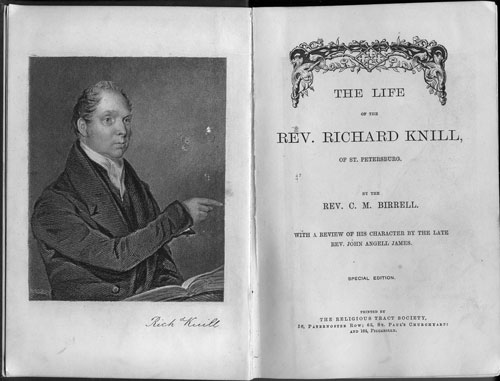
Charles had poor health throughout his life. He had suffered the death of his wife and several children and his own last illness was “prolonged and severe” Despite this and the fiery nature of his sermons his cousin the Rev. Lundie remembered him as a “comforter of the sick and sad, having subdued intensity of emotion,” Lundie described watching one of his sermons: “ The tender music of his voice, the marvellous light that kindled his dark eye as he stood for a moment erect, with one arm outstretched as if at once in supplication to his God and appeal to his hearers, seemed to touch every heart in that hushed assembly”
His ill health forced him to retire in 1872 after 36 years in Liverpool. His congregation presented him with a gift of £2,600 pounds and he gave £500 of it to start a fund to help poor ministers. He stayed in Liverpool for a time and then moved to live near his sister Euphemia Dunn in Blackheath. He returned to Liverpool once a year and stayed with his cousin the Rev. Henry Lundie. Charles died on 16 December 1880 having suffered from bowel cancer for 6 months. He died at 12 Elliot Place, Blackheath, the previous home of his sister Euphemia and her husband who had both died in 1879 within a month of each other. His probate record valued his personal estate at £20,000. The Liverpool Mercury of Tuesday 29 November 1892, said: “ There are few among us who do not think of the Rev Charles Birrell with feelings of affection and veneration. A saintlier man never trod the streets of this town”
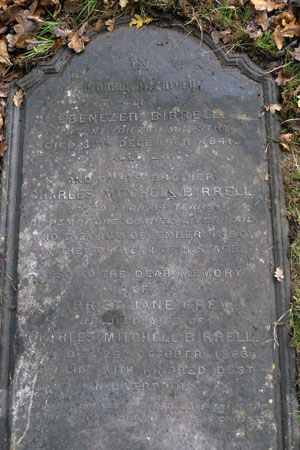
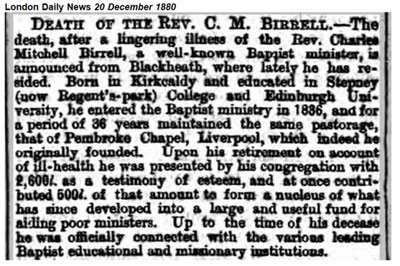
Sources: Obituary Notice. London Daily News 20 December 1880 From https://www.wikitree.com/wiki/Birrell-268
Obituary Notice. Liverpool Echo, Friday 17 December 1880
The Late Rev. C.M.Birrell, Sermon by the Rev. R H Lundie, M.A.The Liverpool Mercury, Monday January 3, 1881 page 3
“Among our first and best helpers” Josephine Butler Centenary. Western Daily Press, Bristol, Tuesday, March 27,1928, page 5
“ There are few among us who do not think” Liverpool Mercury Tuesday 29 Nov 1892 page 6
History of Baptist College Stepney http://dissacad.english.qmul.ac.uk/sample1.php?detail=achist&histid=25&acadid=183
Margaretta Grey in Memoir of John Grey of Dilston by his daughter Josephine Butler. Henry S. King & Co, 65 Cornhill, and 12, Paternoster Row, London, 1874, page 13
Consecration of Toxteth Cemetery From the Liverpool Courier Wednesday 11th June 1856 http://www.toxtethparkcemetery.co.uk/Newspaper%20Articles.html
Unveiling of Bunyan’s statue http://www.waymarking.com/waymarks/WMQM50_Statue_of_John_Bunyan_Bedford_St_Peters_Green_Bedford_UK
Extracts from “A memoir of Ebenezer Birrell, late of Stepney College, London –By his brother.” The Presbyterian Review and Religious journal, for April 1843-Jan 1844 Volume 16 Edinburgh, William Whyte & co. George Street MDCCCXLIII
Review of Ebenezer’s memorial The Baptist Record and Biblical repository Volume 1 London, G & J Dyer, 24, Paternoster Row 1844 pages 27, & 137
Review of Ebenezer’s memorial Scottish Congregational Magazine New series Vol III Glasgow, James Maclehouse, 83 Buchanan Street. MDCCCXLIII page 218
Closed and Open communion “The Dissenters: The crisis and conscience of nonconformity Vol III by Michael R. Watts. 2015 page 144
Birrell’s letters National Archives catalogue online http://discovery.nationalarchives.gov.uk/details/rd/d2cb1592-f746-4411-802c-a08a0425a42f
List of chapels in Liverpool The Baptists in Liverpool The Baptist Magazine October 1866
The Winds and Waves Subject to Christ The Weekly Christian Teacher Vol II Dec 1,1838-November 23, 1839, pages 297-300
On The Practices of Public Worship by Rev C. M. Birrell published in Baptist Magazine for 1839 Vol XXXI series IV Vol II London, Published by George Wightman, 24, Paternoster Row. 1839 pages 470-473
We know little of Charles parents. His father Ebenezer was a merchant. It is possible that his sister Euphemia was a half sister, as there are marriage records for an Ebenezer Birrell and Euphemia Moyes in 1787 and for an Ebenezer Birrell and a Mary Mitchell in Fife in 1806.
His children His son Henry lived to be 70 and was a banker. His daughter Olive Birrell became a novelist writing books with strong female characters, who had jobs, smoked cigarettes and ran away to marry against their parents wishes. She became friends with a group of other independent women, socialists and activists like Annie Besant who used to meet in the British Museum Reading Room. Whether her father would have approved of novels in unknown but she published them between 1883 and 1902 after his death. It was Charles and Harriet's youngest son Augustine (1850-1933) who became the most famous. He was a politician, barrister, academic and author. He was Chief Secretary for Ireland from 1907 to 1916, resigning in the immediate aftermath of the Easter Rising. He was noted for his sense of humour which was called Birrelling. In dictionaries of quotations some of his witty epigrams achieved fame as ‘Birrellisms’—such as ‘That great dust-heap called history’
